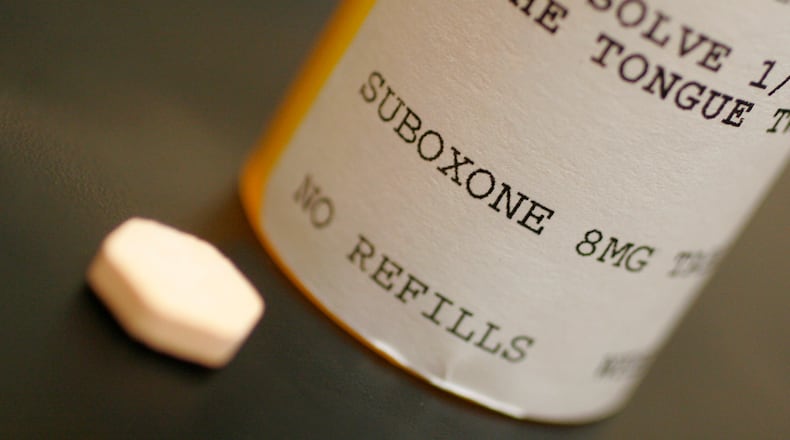The medication helps diminish the effects of physical dependency to opioids, such as withdrawal symptoms and cravings.
Jonas Thom, vice president of behavioral health at CareSource, said he thinks the change is “removing a barrier that I think is the right barrier to remove,” and the move is acknowledging that there need to be more prescribers out there. Buprenorphine is also sometimes hampered by stigma that it “replaces one drug with another” and Thom said he thinks the rule change is acknowledging the stigma is fading.
“I think that the stigma around is lessening. People are recognizing that this is appropriate treatment we need more access to,” Thom said.
Major medical groups such as American Medical Association and American College of Emergency Physicians also praised the rule change.
Dr. F. Stuart Leeds, assistant professor at Boonshoft School of Medicine, said other things prevent access to buprenorphine besides the training and paperwork that was just eliminated.
Leeds has led a grant program to train local providers so they can obtain the waiver to prescribe. He said the additional training required was because this is something most doctors who weren’t an addiction medicine specialist or psychiatrist hadn’t encountered in medical school or residency.
He said he frequently hears from providers who aren’t comfortable with prescribing Suboxone because they feel that the eight hours of training to get the approval to prescribe wouldn’t be enough to be comfortable. Some physicians, particularly in remote areas, might not have easy access to a mental health provider for behavioral health support for their patients.
Leeds said he is going to continue offering the training even though it is no longer required because it’s information that people prescribing the medication need to know.
“I would say the eight hour training is a minimum. There’s very little fluff in it. It’s a concentrated eight hours and stuff you probably need to know, and probably need some reinforcement with,” Leeds said.
Under the new guidelines, nurse practitioners and physician assistants will still need to apply for approval to prescribe buprenorphine.
The move comes on the heels of a resurgence in opioid overdose deaths in the region amid the pandemic, as well as statewide and nationally, as the pandemic created upheaval in support and coping.
In Montgomery County, the loss of life is higher than the year before but comparatively lower than 2017 when 566 people died from accidental overdoses, mostly fueled by opiates. So far, preliminary data indicates 321 people in the county died from accidental overdoses in 2020, compared to 285 deaths in 2019.
Before buprenorphine, methodone was an option for treatment opioid use disorder. However, buprenorphine was a breakthrough as the first medication to treat opioid use disorder that could be prescribed or dispensed in physician offices, significantly increasing access to treatment.
Addiction treatment with the help of one of three medications -- buprenorphine, methodone or naltrexone -- is known as medication-assisted therapy.
While medication-assisted therapy access is key to helping more people recover, access is limited. Only about 42% of Ohio rehabilitation facilities offer buprenorphine and only 55% offer any form of medication-assisted treatment.
Particularly, patients in rural parts of the region can have long waits or have to travel long distances to get medication to treat addiction because of the lack of providers with the training. The latest federal data listed no providers in Preble County who had received the training to prescribe buprenorphine.
How to get help
To find local service providers for addiction, rehab, mental health and more in Montgomery County, download the GetHelpNow interactive directory to find a facility near you. You can find it in the app store on your phone or go to gethelpnowmc.com to click “access for free.”
Anyone in Ohio can reach the Crisis Text Line by texting the keyword “4hope” to 741 741 to be connected to a trained crisis counselor within 5 minutes. Treatment options can also be found 24/7 by calling 1-800-662-HELP (4357) or at samhsa.gov/find-treatment.
About the Author
